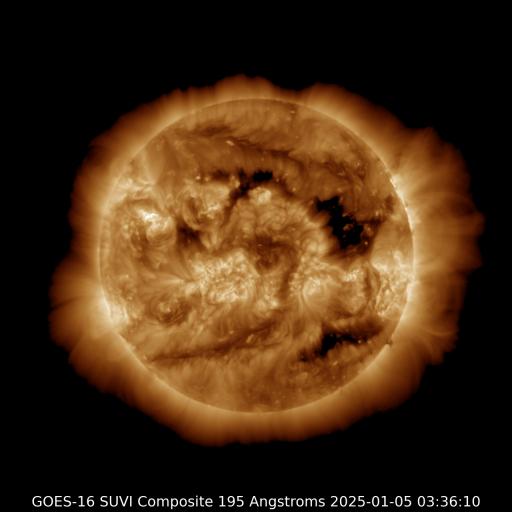Viewing archive of Saturday, 28 December 2013
Daily bulletin on solar and geomagnetic activity from the SIDC
Issued: 2013 Dec 28 1223 UTC
SIDC Forecast
Solar flares
Eruptive (C-class flares expected, probability >=50%)
Geomagnetism
Quiet (A<20 and K<4)
Solar protons
Quiet
| 10cm flux | Ap | |
|---|---|---|
| 28 Dec 2013 | 133 | 001 |
| 29 Dec 2013 | 133 | 001 |
| 30 Dec 2013 | 133 | 005 |
Bulletin
There were six C flares on the Sun during the past 24 hours. The brightest one was a C2.3 flare released by NOAA AR 11934, which peaked at 23:36 UT on December 27. Since AR 11934 and 11936 are still showing flux emergence, the probability for C flares over the next 48 hours is high (around 90%) and for M flares around 25%. Over the past 24 hours, the solar wind speed as observed by ACE gradually decreased from about 310 km/s to about 280 km/s. Around 18h UT on December 27, the magnitude of the Interplanetary Magnetic Field dropped suddenly from about 8 nT to about 3 nT. A continuation of nominal solar wind conditions is expected on December 28-30. Geomagnetic activity has been quiet over the past 24 hours (NOAA Kp between 0 and 2). Quiet geomagnetic conditions (K Dourbes < 4) are expected on December 28, 29, and 30, with a slight chance of active conditions (K Dourbes = 4) in the first half of December 30 (in case the Earth suffers a glancing blow from the CME first observed by LASCO C2 at 7:36 UT on December 26).
Today's estimated international sunspot number (ISN): 066, based on 17 stations.Solar indices for 27 Dec 2013
| Wolf number Catania | /// |
| 10cm solar flux | 131 |
| AK Chambon La Forêt | 005 |
| AK Wingst | 002 |
| Estimated Ap | 002 |
| Estimated international sunspot number | 077 - Based on 13 stations |
Noticeable events summary
| Day | Begin | Max | End | Loc | Strength | OP | 10cm | Catania/NOAA | Radio burst types | |
|---|---|---|---|---|---|---|---|---|---|---|
| None | ||||||||||
Provided by the Solar Influences Data analysis Center© - SIDC - Processed by SpaceWeatherLive
All times in UTC
Current data suggests there is a slight possibility for aurora to appear at the following high latitude regions in the near future
Gillam, MB, Iqaluit, NUNuuk
Reykjavik
Latest news
Latest forum messages
Support SpaceWeatherLive.com!
A lot of people come to SpaceWeatherLive to follow the Sun's activity or if there is aurora to be seen, but with more traffic comes higher server costs. Consider a donation if you enjoy SpaceWeatherLive so we can keep the website online!

Latest alerts
00:55 UTC - Coronal hole
A southern hemisphere coronal hole is facing Earth. Enhanced solar wind could arrive in ~3 days
Monday, 7 April 2025
20:45 UTC - Geomagnetic activity
Active geomagnetic conditions (Kp4) Threshold Reached: 20:39 UTC
17:33 UTC - Hemispheric Power Index
The OVATION model predicts the Hemispheric Power Index to reach 51GW at 18:18 UTC
Space weather facts
| Last X-flare | 2025/03/28 | X1.1 |
| Last M-flare | 2025/04/05 | M1.0 |
| Last geomagnetic storm | 2025/04/06 | Kp5 (G1) |
| Spotless days | |
|---|---|
| Last spotless day | 2022/06/08 |
| Monthly mean Sunspot Number | |
|---|---|
| March 2025 | 134.2 -20.4 |
| April 2025 | 148.7 +14.5 |
| Last 30 days | 134.1 -5.6 |




